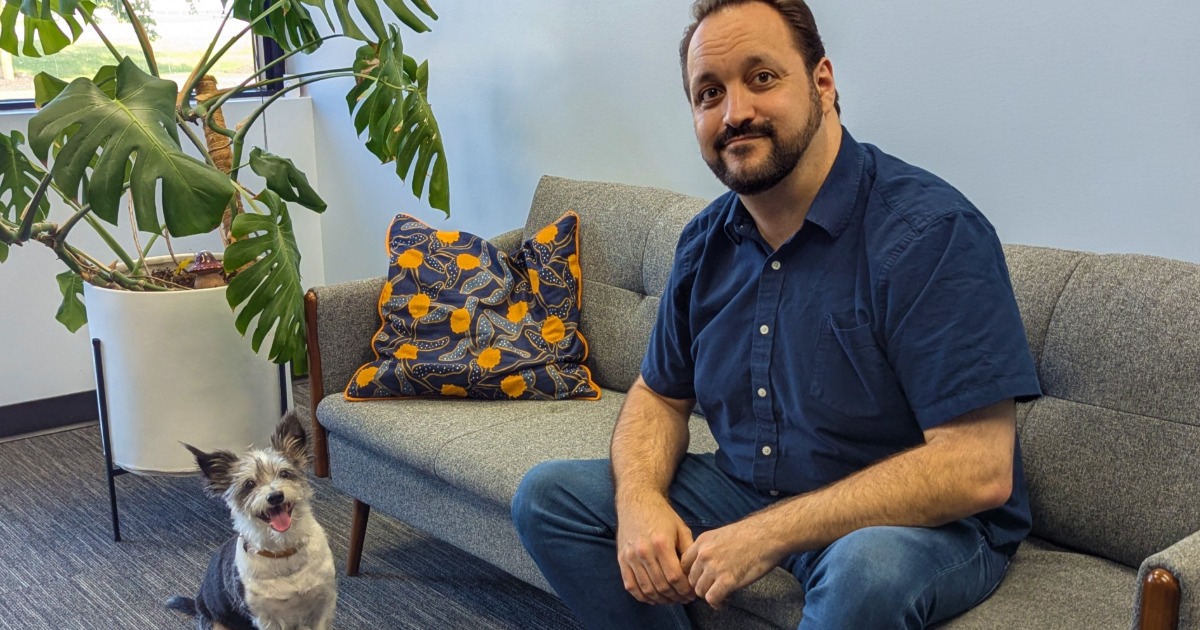The people behind federally subsidized ACOs believe in the dream of better care
WASHINGTON - This past April, the federal government announced the names of 27 healthcare organizations nationwide that will be part of a brand new Medicare Shared Savings Program. If the doctors and other providers in one of the newly selected accountable care organizations (ACOs) are able to lower costs and improve care, they will reap financial rewards. Yet if you ask any of those involved, the money is not what excites them. It’s the opportunity to deliver better healthcare.
ACOs come in all shapes and sizes and have evolved in all sorts of ways. Many have more than a decade of experience in trying to drive change through self-designed ACO-like activity - well before the federal government issued the ACO regulations and searched for participants for the new Shared Savings Program. The one thing they all seem to have in common is they have evolved to best serve their local communities. The people involved agree that though healthcare IT is not required to participate in the Shared Savings Program, it is nonetheless indispensable for rendering the program a success.
This does not mean that every physician participating in the ACOs has an electronic health record system in place. Far from it. Many doctors are still lagging in adoption and yet they have chosen to take part in their ACOs anyway. Therein lies the hard part, the executives of some of the ACOs say. Yet, they seem to be undaunted by the challenges ahead of them. They believe they are on the edge of some great changes, and it all will work itself out.
Arizona Connected Care
For leaders of Arizona Connected Care in Tucson, Ariz., it’s a privilege to pave the way for others, particularly since their type of healthcare system is typical of many communities across the country.
John Friend, an attorney and the executive director of Arizona Connected Care firmly believes the federal Shared Savings Program is one of the many changes that will revolutionize the U.S. healthcare system. Friend is also the associate general counselor and vice president of business development for Tucson Medical Center, the ACO’s only hospital, a 615-bed nonprofit.
“You have to begin by resetting the standards. ACOs are a part of that,” Friend says. “If large transformation is going to happen, it’s going to take local organizations taking local responsibility.”
Tucson Medical Center had been working on building relationships with its physicians and improving outcomes for the past four years as part of a way to gain more market-share, Friend says. When the time came, it was fairly easy to form an ACO. “We became an ACO by attaching the ACO acronym to our ongoing project,” he says.
Friend says without the federal Shared Savings Program, Tucson Medical Center would have continued its efforts to improve care and the patient experience, but it would not have been able to do as much.
Show me the IT
There are IT challenges with forming an ACO. Nobody knows that better than Michael Griffis, the lead chief information officer for Arizona Connected Care and Frank Marini, the chief information officer for Tucson Medical Center and Arizona Connected Care.
According to Griffis, all 230 physicians participating in the ACO are physician-owned practices of varying sizes, composed of mainly primary care physicians. Most of the groups are fairly small, with one practice containing more than 100 physicians. That large practice is one of three federally qualified health centers participating in the ACO.
Of the 11 practices participating, four do not have EHRs yet. Two of those four will have them shortly.
Tucson Medical Center is in a position to be a technological leader for the ACO. It is among the 1 percent of hospitals ranking a Stage 7 for the use of technology, the highest ranking available on HIMSS Analytics scale, Griffis says.
“We have a pretty good solid history of success at employing large-scale complex [IT] initiatives in the hospital,” Marini says of the efforts to wire the hospital. “But when we talk about the IT to support an ACO, especially with physicians all using different electronic health records, we’re finding the challenges are pretty significant.”
“The ACO requires independent practitioners to have to do things differently to become aligned and coordinated across the continuum of care,” Marini says. “Exchanging information is the fundamental challenge to achieving clinical integration. Health information exchange is one of our primary objectives.”
On top of workflow issues and cultural challenges surrounding EHR adoption, some of the practices aren’t even close to what would be required for an ACO, Griffis says. The ACO program has only just begun. There’s a lot of work left to do, just to get things in place. But Griffis and Marini are optimistic, and they believe the effort will be worth it. “When we make this work, it will be highly relevant and replicable for other communities like ours,” Griffis says.
Retirement at 65? No way
In ACOs, where the rubber really meets the road is with the physicians. Jeffrey Selwyn, an internist at New Pueblo Medicine, is the president of the board for Arizona Connected Care. He has always been big on the medical home model, but he hasn’t always been keen on EHRs.
As he looks back, he admits he was almost like a champion for older physicians who didn’t want to learn what seemed like a time-consuming new way of keeping patient records. He often said so in the local newspaper. The way he did things on paper was fine. It was working. He was very organized, he explains. When his practice began adopting EHRs eight years ago, he was the last one to get on board.
Now, at age 65, when most doctors are thinking of retiring because of the pressures on them – one of which is EHR adoption – Selwyn is far from retiring and far from his old stance. He is sold – not only on EHRs, but also on ACOs. He is passionate about the new Shared Savings Program and was eager to sign on in a leadership role, he says. He hopes to be an inspiration to other doctors, especially those who are resisting EHR adoption for fear it will load them with yet more work.
“I know their pain. I know what it’s like,” Selwyn says. “But, if we can just gather data, we can help them work smarter, not harder.”
As far as the kind of care an ACO can provide? Selwyn says they can deliver where HMOs could not because the technology is here now. Speaking of consolidated care, the use of data to promote best practices and preemptive measures to keep patients healthier before they get sicker, Selwyn adds: “This is what we were trained to do, and I want to do it before I quit.”
Accountable Care Coalition of Texas
Miguel Franco, MD, an internist and a board certified pulmonologist is the medical director for the Houston-based Accountable Care Coalition of Texas. The ACO is made up of some solo practices and some larger groups, like his own with 17 physicians.
“One thing that we’re excited about,” he says, “is how the different kinds of practices can come together to coordinate care.” This is particularly important with older patients who lack support at home, he says. The Shared Savings ACOs are required to have care coordinators to help stay in touch with patients. Visiting nurses or social workers may be assigned to check on the patient. These are resources the primary care physician doesn’t have, especially when in solo practices.
“These aren’t the days of Marcus Welby anymore,” Franco says. “There are a lot more procedures and medications available. Patients are growing older and there’s a need for the physician to have more help.”
Kirk Clove is president of Collaborative Health Systems (CHS), a subsidiary of Universal American, which specializes in Medicare Advantage. CHS jointly owns nine of the 27 ACOs announced in April to participate in the Shared Savings program.
In the case of the Texas ACO, Universal American has been working with these same physicians for years and already had a good relationship with them, Clove says. Over the past decade, the payer has been active in sharing outcomes and performance data with the physicians and collaborating with them to improve care.
Accountable Care Coalition of Greater Athens, Georgia
Toby Bond, an internist and the president of the Accountable Care Coalition of Greater Athens, Georgia, says primary care physicians are overworked and underpaid.
“Primary care physicians are the backbone of medicine, but we have no resources,” he says. Bond is hoping ACOs can help. He is looking forward to having more ways to watch over his most frail patients.
But, in his view it won’t come without a price.
“No one’s done this before,” he says.
The Accountable Care Coalition of Greater Athens’ first budget is more than $90 million, with no one that has experience managing that kind of money. In addition to the management challenge, there is the interoperability challenge. “This is a monumental task we’re about to undertake,” Bond says. But, he too is a believer. “The concepts are good. The patients will be the ones who win.”
The Accountable Care Coalition of Greater Athens is also jointly owned by CHS and has 27 primary care physicians and one specialist. It is comprised of 12 different practices, some of which are solo practitioners and the largest group has eight doctors. There are no hospitals participating in the ACO, according to Evelyn Jones, the CEO of the Greater Athens ACO.
“We have been on this course for a number of years,” she says of coordinating care. “This just gives us a better opportunity to implement it.”
Jones reflects on thrilled the doctors were when the ACO was formed. “When they first came together and looked at the core measures, protocols and care coordination required in the ACO regulation, I heard them say, ‘this is the way we want to practice medicine.’”


